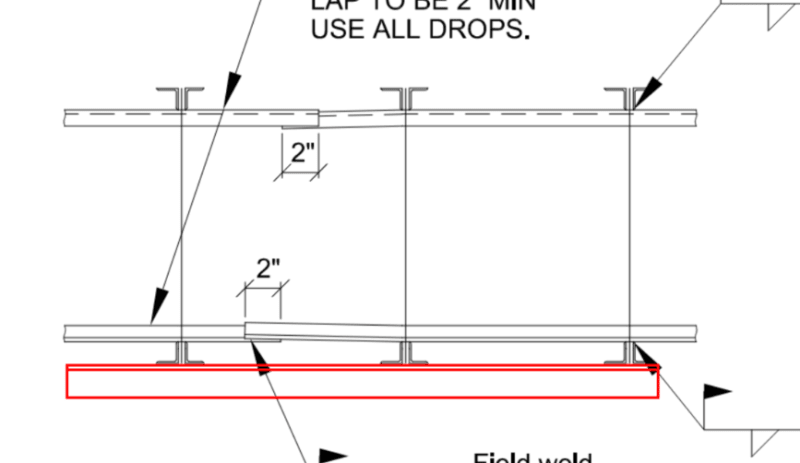Has anyone run into a condition where they are trying to brace an existing joist bottom chord but cannot place their angle along the top of the existing bottom chord (due to obstructions)?
Instead, I'd have to provide my angle to the bottom of the chord as shown in red.
I'm hoping the GC can run a weld across the full width of the reinforcing angle. I'm just not sure how I feel about the connection not having positive bearing at the chord.

Instead, I'd have to provide my angle to the bottom of the chord as shown in red.
I'm hoping the GC can run a weld across the full width of the reinforcing angle. I'm just not sure how I feel about the connection not having positive bearing at the chord.

